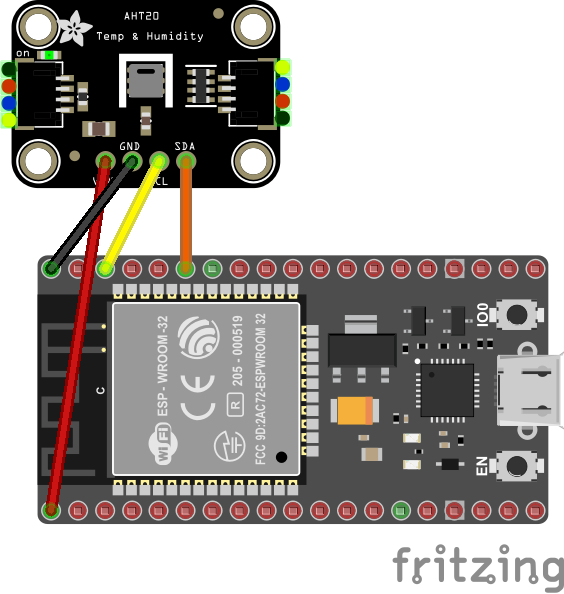AHT10/15/20 - Temperature and humidity sensor modules
The AHT10/15 and AHT20 sensors are high-precision, calibrated temperature and relative humidity sensor modules with an I2C digital interface.
Documentation
Supported Devices
The binding supports the following types:
Functions
The binding supports the following sensor functions:
- acquiring the temperature and relative humidty readings
- reading status
- issueing calibration and reset commands
Sensor classes
You need to choose the class depending on the sensor type.
| Sensor | Required class |
|---|---|
| AHT10 | Aht10 |
| Aht15 | Aht10 |
| Aht20 | Aht20 |
Usage
Important: make sure you properly setup the I2C pins especially for ESP32 before creating the I2cDevice, make sure you install the nanoFramework.Hardware.ESP32 nuget:
//////////////////////////////////////////////////////////////////////
// when connecting to an ESP32 device, need to configure the I2C GPIOs
// used for the bus
Configuration.SetPinFunction(21, DeviceFunction.I2C1_DATA);
Configuration.SetPinFunction(22, DeviceFunction.I2C1_CLOCK);
For other devices like STM32, please make sure you're using the preset pins for the I2C bus you want to use.
The binding gets instantiated using an existing I2cDevice instance. The AHT-sensor modules support only the default I2C address.
Setup for an AHT20 sensor module:
const int I2cBus = 1;
I2cConnectionSettings i2cSettings = new I2cConnectionSettings(I2cBus, Aht20.DefaultI2cAddress);
I2cDevice i2cDevice = I2cDevice.Create(i2cSettings);
Aht20 sensor = new Aht20(i2cDevice);
The temperature and humidity readings are acquired by using the following methods:
public Temperature GetTemperature()
public Ratio GetHumidity()
Refer to the sample application for a complete example.
Wiring
The AHTxx sensor is wired to the I2C interface (SDC/SDA) of the MCU. The sensor is supplied with 3.3V to comply with the 3.3V interface level of the MCU.
